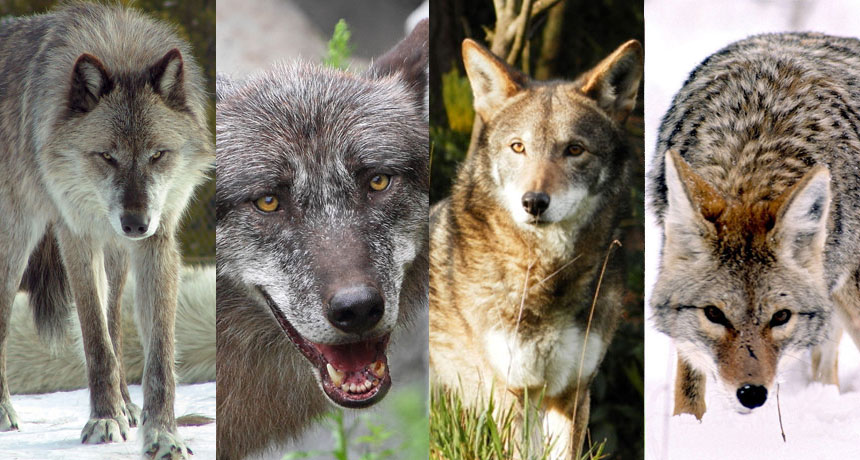Distinctions blur between wolf species
Blending of coyotes, grays leads to muddled canine identities

MIXED UP Eastern wolves (second from left) and red wolves (second from right) might be better described as mixtures between gray wolves (far left) and coyotes (far right) rather than distinct species, a new genetic analysis suggests.
FROM LEFT Dennis Matheson/Flickr (gray wolf); Steffen239/Flickr (eastern wolf); Christine Majul/Flickr (red wolf); Mav/Wikimedia Commons (coyote)